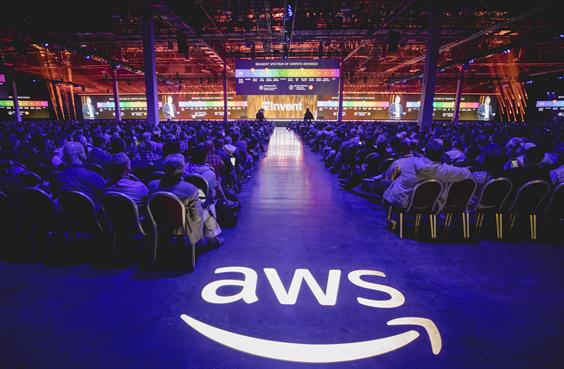Most CEOs the world over would swap serious parts of their anatomy for the “problems” that Amazon’s AWS cloud unit is confronting: Q3 revenue up “only” 35% to $9 billion.
But life in the Cloud Wars is definitely not like it is in most other industries. And Amazon has only its stellar performances of the past to blame for the perception that revenue growth of 35% is a potential cause for concern.
Check out these facts:
- In Q3 of 2018, AWS’s revenue grew 46%; in Q3 this year, 35%.
- For the first 9 months of 2018, AWS’s revenue grew 48%; for the first 9 months of this year, 38%.
- For the 3 months ended Sept. 30, Microsoft’s cloud business had revenue of $11.6 billion. Amazon’s cloud business had revenue of $9 billion.
- For those 3 months, while AWS revenue grew 35%, Azure—the part of Microsoft’s cloud business that is most directly comparable to AWS—grew 59%.
Some folks will say that “you can’t compare” the cloud businesses of Microsoft and AWS because they’re not exactly the same. That’s an absurd argument because the very essence of competition is to be different, to find new and unique ways to drive value, to assemble and offer more and more-valuable points of differentiation and customer-centric value than your competitors do.
Microsoft vs. Amazon: The Lay of the Land
There is no question that Microsoft has risen to the preeminent position in the Cloud Wars because it offers not just cloud infrastructure—a segment where AWS is clearly the category king—but also a huge range of PaaS and SaaS offerings that business customers want and need.
So it makes perfect sense for Amazon to continue its aggressive expansion up the tech stack into the software realm. That’s precisely what AWS has been doing with its fast-growing database business. For example, in Q3 AWS launched a new database aimed at capitalizing on the booming interest in blockchain. In its earnings release, the company said the Amazon Quantum Ledger Database offers an “immutable and cryptographically verifiable ledger for applications that need a central, trusted authority to provide a permanent and complete record of transactions.”
And surely the biggest example of Amazon’s commitment to becoming a big-time player in the database world has been its internal migration. Namely, moving to its own databases from the Oracle databases that ran Amazon’s business for its first 20 years.
For an incredibly huge and transaction-heavy business like Amazon’s, that’s been a remarkable achievement. But I have not heard of any other big companies willing to make such a massive commitment.
If AWS can make a dent in Oracle’s huge market share for enterprise databases, that would be a great source of software-driven growth for Amazon. So we’ll keep a close eye on that.
Cloud Wars
Top 10 Rankings — Nov. 4, 2019
| 1. Microsoft — Q1 cloud revenue of $11.6B = 35% of company’s total revenue! |
| 2. Amazon —My take on its $100-million-a-year deal with Lyft |
| 3. Salesforce —Is Benioff planning to switch more databases from Oracle to AWS? |
| 4. SAP —Microsoft deal drives growth as Q3 cloud revenue tops $2B for new CEOs |
| 5. Oracle — Ellison: Autonomous DB growth “so extraordinary, we’re not forecasting” |
| 6. Google — No Q3 cloud revenue details, but “significant growth” across the globe |
| 7. IBM — Q3 cloud revenue up 14% to $5B as Red Hat triggers internal changes |
| 8. Workday — CEO Aneel Bhusri says Oracle, SAP can’t match it in Fortune 100 mkt. |
| 9. Accenture — Up from #10 on ties w/ MSFT AWS GOOG; $9B cloud biz up 23% in ‘18 |
| 10. ServiceNow — Bill McDermott takes over as CEO as Q3 revenue reaches $900M |
What Amazon Has to Say about SaaS
But during Amazon’s recent earnings call, CFO Brian Olsavsky was asked about the possibility of AWS going even higher up the tech stack beyond databases and into applications.
The wordy but substance-free reply from Olsavsky offered zero clues about whether AWS will look to become a player in SaaS.
During the Q&A portion of the earnings call, an analyst asked Olsavsky a multi-part question. The final piece of the inquiry was: “And the third part of this is about your interest and your success in going up the stack and getting more into the application-software space.”
Here’s Olsavsky’s reply to that portion of the analyst’s question.
In your question on enterprise penetration, you know I think with the enterprise, we’re making great progress there. You know it’s going to be hard on revenue growth, it’s going to fluctuate quarter-to-quarter, it’s hard to predict the pace of some of the sales cycles and the enterprise migrations that companies are willing to make or some are faster than others and some have other work to do before they can migrate.
So you know there’s a lot of factors at play there on the enterprise business, but we are having great success and we’re adding a lot of sales force or sales representatives, especially for the enterprise market.
What’s Up With the Non-Answer?
Now, during earnings calls, it’s quite common for executives to give vague and detail-free replies to analysts’ questions. But at a time when AWS’s revenue growth is slowing markedly—from 46% in Q3 a year ago to 35% in Q3 this year—it’s not unreasonable to expect a bit of clarity from the CFO regarding where and how the company expects to reverse the decline the growth trajectory.
Yet Olsavsky’s reply to that straightforward question about a move into SaaS was completely empty. Essentially: we’re doing great in the enterprise, revenue fluctuates quarter to quarter, enterprise migrations are hard to predict, and we’re adding lots of salespeople.
It was such a non-answer that Amazon’s head of investor relations, Dave Fildes, felt like he should jump in to try to add some information. A plucky attempt on the part of Fildes, but the outcome was pretty much the same. He totally sidestepped the question.
I’ll spare you the full commentary. But overall Fildes said that because AWS focuses heavily on “listening to customers, understanding issues that are emerging, and having open lines of communication,” it’s been able “to innovate quickly and really faster than anyone else.”
Because it listens to customers and tries to understand their issues, Fildes went on, AWS is able to “continue to roll out a lot of great services that customers are looking for” and “stay on the cusp of emerging technologies or customer pain points that need to be solved.”
Well, that clears that up, doesn’t it?
Amid Growing Competition, Amazon Needs to Innovate
Again, Q3 revenue growth of 35% to $9 billion is an excellent performance. But AWS’s core infrastructure business is facing more-intense competition than it ever has before. It must fight off attacks from not only Microsoft, but also Google Cloud and even a bit from Oracle.
If that competition from two of the world’s top technology companies—each of which can fully match or surpass Amazon in financial muscle—continues to chip away at AWS’s growth in IaaS, then what new products and services will emerge to boost the currently declining growth?
The only answer is software, via more-aggressive expansion in existing (PaaS) or new (SaaS) layers of the cloud.
As noted, Olsavsky chose to steer clear of that topic. But he did mention on a couple of occasions that AWS will be making significant investments in expanding its sales team and boosting its marketing efforts.
“We continue to feel really good about not only the top line but also the bottom line in that business [AWS}, but we are investing a lot more this year in salesforce and marketing personnel,” Olsavsky said.
Those additions are needed to handle the company’s growing list of customers and its expanding list of products, as well as to keep pace with AWS’s move into new geographies, Olsavsky said.
“We’re chasing a large opportunity here and that’ll be as we say bumpy as we go along, but we’re fully confident that will be a very leveraged cost as we get to scale.”
All Eyes on AWS re:Invent
Maybe Olsavsky and Amazon are saving all their thunder for 4 weeks from now when they host 65,000 of their best friends in Vegas for the annual AWS re:Invent conference.
Competition is good for everybody. And if Amazon has shown anything across its 20-year history, it is a deep and abiding love for bare-knuckle competition.
So I hope AWS commits to software more deeply and more aggressively than ever before. Because the more intense the competition in the Cloud Wars, the better the outcomes for business customers.
Because the cloud is the foundation for the emerging digital economy.
RECOMMENDED READING
#1 Microsoft Puts Amazon and Google on Notice: We’re Just Getting Started
Will Salesforce Dump Oracle and Pick AWS? An Insider’s Perspective
#1 Microsoft, #2 Amazon Will Drive Cloud Wars Top 10 Over $40 Billion for Q3
Why #1 Microsoft Is Top Cloud Vendor: Cloud Now Drives 35% of Revenue
Machine Learning More Disruptive than Cloud, Says Workday CEO Aneel Bhusri
#1 Microsoft Cloud Revenue Tops Salesforce, SAP, Oracle and Google Combined
Disclosure: at the time of this writing, Microsoft was a client of Evans Strategic Communications LLC.
Subscribe to the Cloud Wars Newsletter for in-depth analysis of the major cloud vendors from the perspective of business customers. It’s free, it’s exclusive, and it’s great!









